In the Philippines, if you want to buy a wagon, you have to spend a lot on either a Mazda6 Sports Wagon or a Subaru Levorg. Or you can spend a fortune on an Audi and its lineup of deliciously powerful and snarly wagons.
But there’s another German-branded option out there that doesn’t break the bank – the Volkswagen Santana GTS. In fact, the Santana GTS doesn’t even go over the six-digit mark, which makes it the most affordable wagon you can buy in the Philippines.
That said, expect some trade-offs with its lower price tag and I’m here to discuss those and more with this Santana GTS review.
Exterior
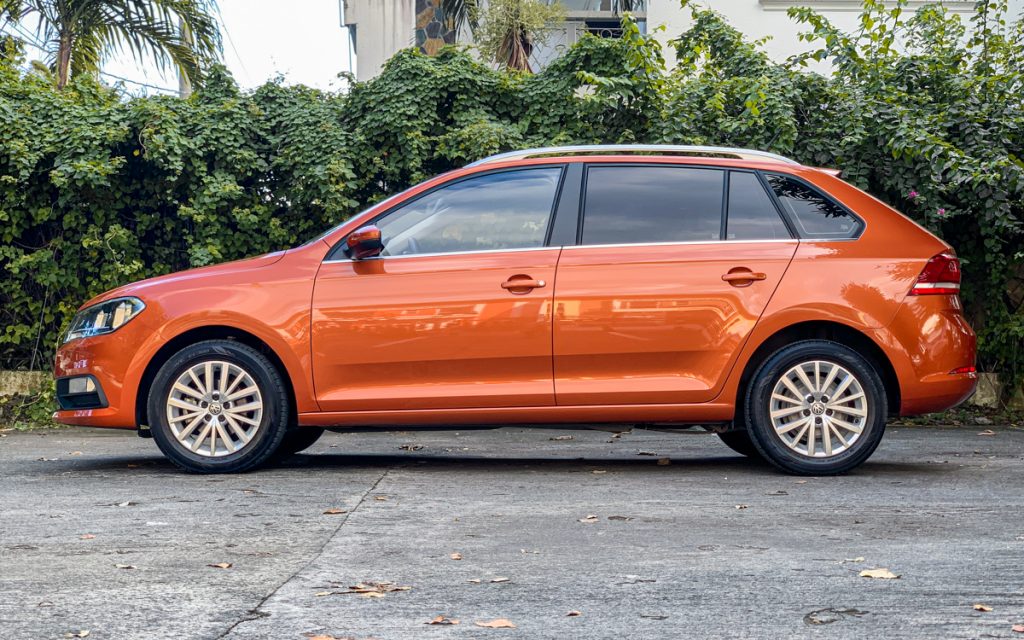
First things first: Is the Santana GTS a true wagon or just a hatchback? The rear end of this Volkswagen is a point of contention among enthusiasts because it doesn’t have the usual wagon shape. But to solve the mystery, the major indication that the Santana GTS is a wagon (apart from the GTS badge) is the presence of a D-pillar. Hatchbacks (with a few exceptions) don’t have that, as is the huge cargo space, but more on that in a bit.

Now, on to the Santana GTS’s design – not much to discuss, apparently. As with the rest of Volkswagen’s lineup here and abroad, this one dons a simple and straightforward design. Quite literally, in fact, as most of the character lines you’ll see on the exterior are straight lines. Not a bad thing, really, because it makes the car look timeless. Several years down the line, this car won’t age that much, and that’s definitely a good thing. But for those who are into cars that will make their hearts skip a beat, the Santana GTS isn’t for you.
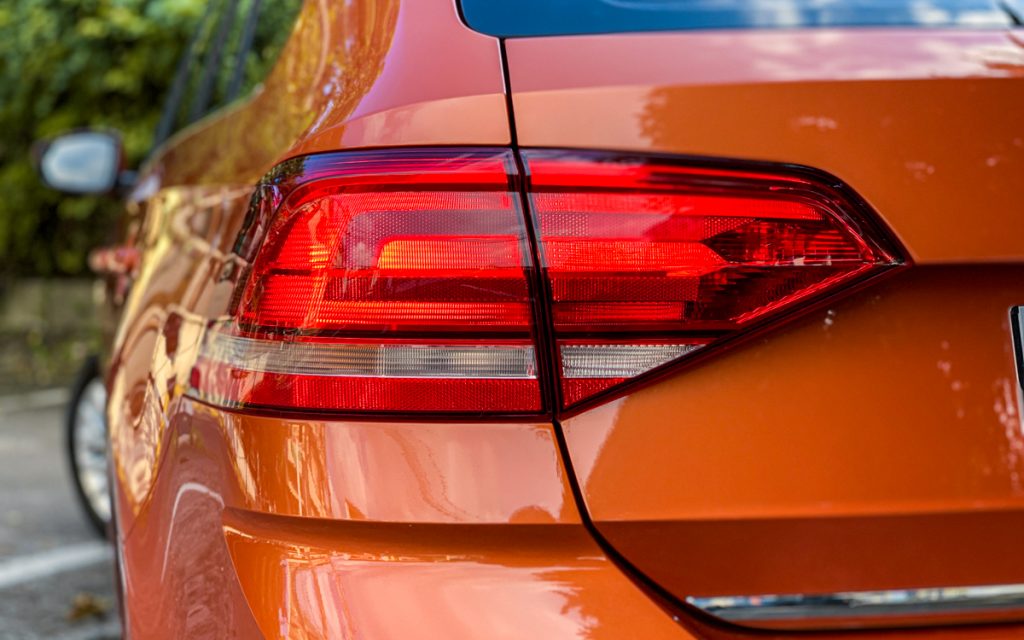

I particularly love the taillights of this car, although Volkswagen could have made the headlights LEDs instead of halogens for a more premium look. The entire design will grow on you, though, and the simplicity leaves space for sporty modifications such as lowering springs, bigger wheels, some skirts, and more.
Interior
The VW Santana GTS is a subcompact wagon, meaning it’s diminutive in size but surprisingly, the cabin isn’t cramped, more so behind the rear seats. The leg cushions are soft, but for taller individuals, you might ask for more coverage for your thighs.

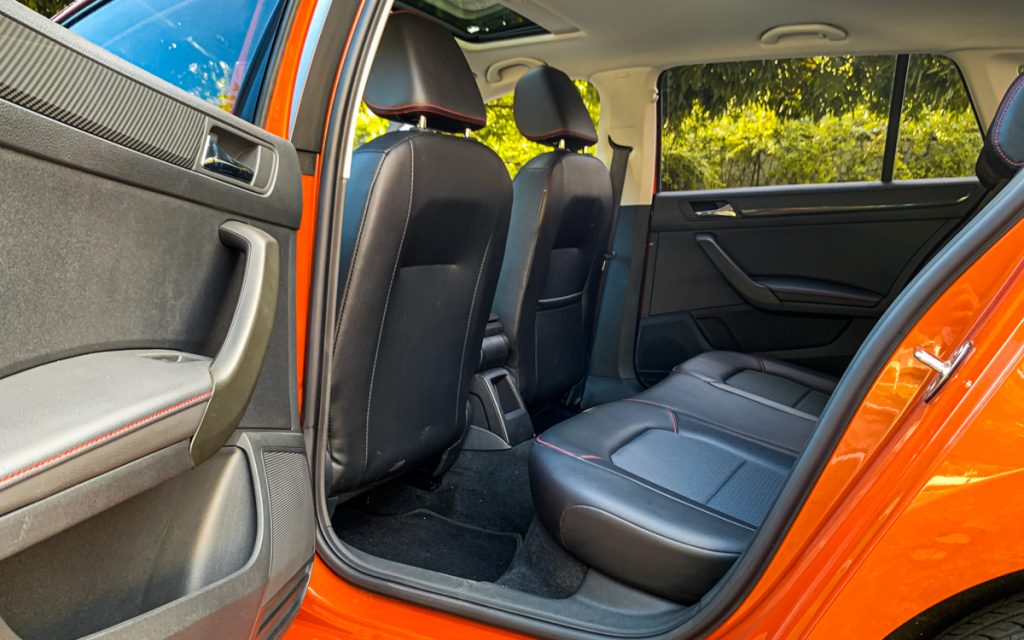
The materials used in the cabin aren’t from the top shelf, but they’re durable and there are minimal scratch-prone piano black plastics. For drivers who rest their elbows while on a cruise, the adjustable elbow-rest in between the front seats is heaven-sent – though using this as storage isn’t its selling point.
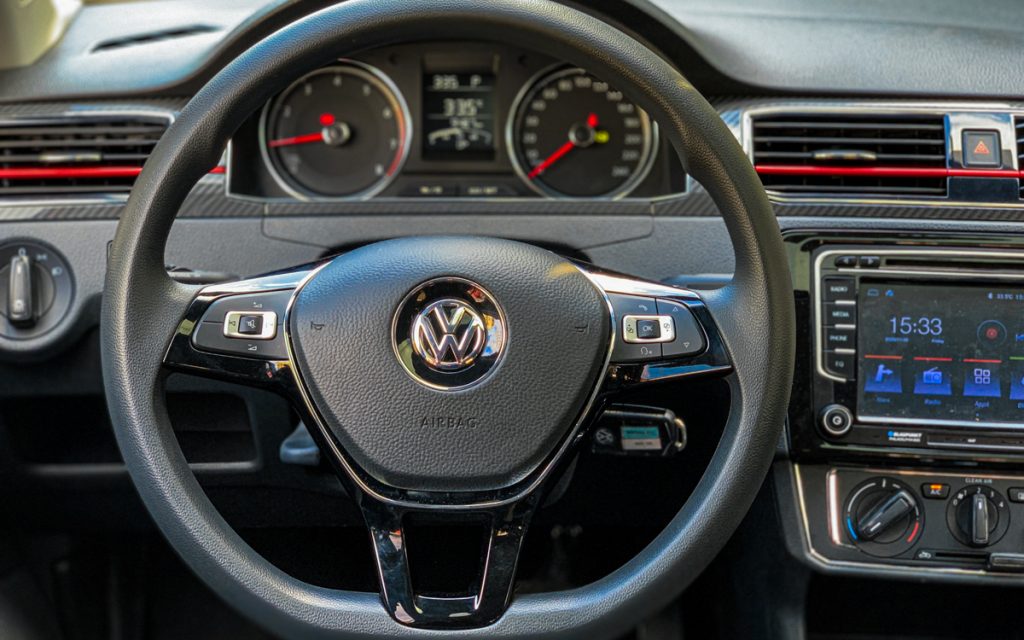

Design-wise, the cabin is ergonomic plus you’ll appreciate some subtle hints of sportiness with the faux carbon prints and red stitching. Overall, like what I said for the exterior, the simplicity and no-BS styling of the cabin are its main weapon, and I know several people who like that, including myself.
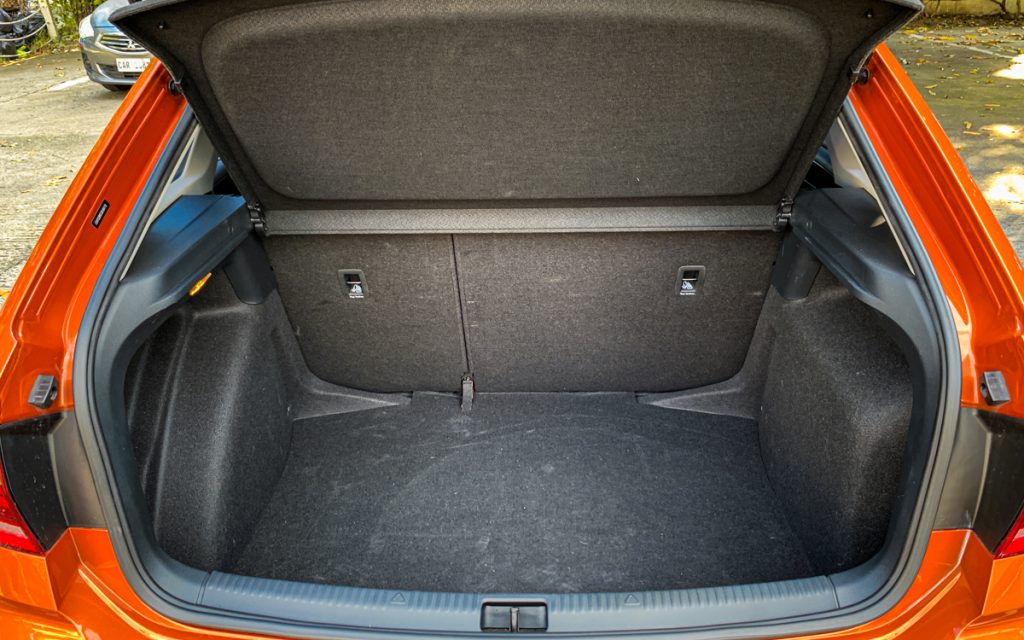

Technology & Safety
While I’m a fan of straightforwardness, I’m also for tech toys found in modern cars. The Santana GTS doesn’t necessarily lack in this arena as it has the basics at this price point such as cruise control (perfect for SLEX to NLEX cruise on the new Skyway Stage 3), all-power controls, and idle auto start/stop. I am not a huge fan of the latter, but if you’re particular with fuel consumption, it could help marginally.
The optional Blaupunkt touchscreen infotainment, which adds P31,000 to the price tag, isn’t hard to operate but you’ll feel its trait as a piece of third-party equipment. If VW could host its own integrated infotainment in its cars, that would be better.
Safety-wise, the Santana GTS delivers with its dual front and side airbags, ISOFIX child seat anchors, ABS with EBD, seatbelt reminders for front occupants, five 3-point seatbelts, and stability control. It also has rear parking sensors but, if you’re looking for a rear camera, that’s another P5,000 on top of the Blaupunkt unit.
Driving & Handling
This is primarily the main reason why I love the Santana GTS – its on-road manners. VW did a great job in equipping it with a conventional 6-speed auto gearbox (as opposed to DCT). The power delivery was great, maximizing the 108 hp and 150 Nm of torque from the 1.5L MPI naturally aspirated gasoline engine. Even on its Normal setting, the response was noteworthy and the acceleration was spritely. I just wish that there’s a manual mode or a paddle shifter, but as it stands, the powertrain combo was already commendable.

Despite the length, which isn’t really that long, the Santana GTS wasn’t hard to maneuver even on tight city streets. Steering felt assisted but road feedback isn’t numb, which makes it a pleasure to drive on winding roads. There’s a bit of body roll, though, so you might want to go easy on that. Brakes, however, need a bit of adjustment for better stopping power.
Fuel Efficiency
The Santana GTS was a standout highway cruiser, returning over 20 km/L on a relaxed sprint on NLEX. Within the city, however, it averages 8 km/L amid medium to heavy traffic.
Of note, these figures were taken with only myself and my handy laptop bag inside the car.
Verdict
I’ve been a long fan of wagons – more than crossover, SUVs, or any huge vehicle you’ll see on the right now. They’re a testament that you don’t need to compromise driving pleasure if you’re buying a family vehicle with lots of luggage space. And with the Volkswagen Santana GTS and its P998,000 price tag, adoration wasn’t hard even with its shortcomings.
I highly recommend considering the Santana GTS for your family vehicle purchase – that’s if you don’t need seven seats and you’re into subtler designs in the sea of aggressively styled cars.

